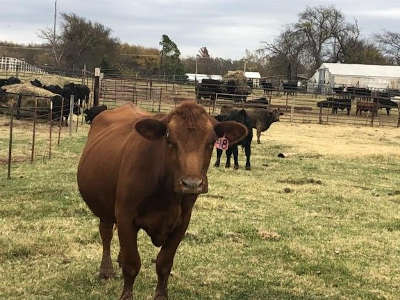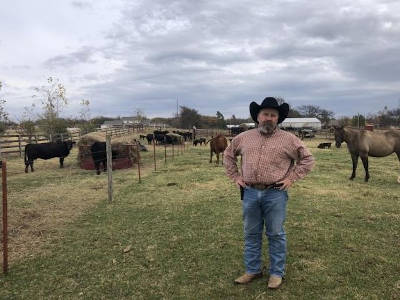By Seth Bodine
“Green is for grade cattle. Pink is for our purebred cows, and that's because all of them exhibit just a little bit more femininity than our grade cattle. Yellow is the bull,” Calvert says.
Calvert could name a few of his cows without ear tags, like Angie, a retired show heifer. Otherwise, it would be a little tricky. Without brands, ear tattoos or tags, it’s hard to distinguish cows apart. A team of researchers are making facial recognition technology for cows, which might lead a faster way of tracing in the event of a disease outbreak.
K.C. Olson, a professor of range livestock nutrition at Kansas State University, worked with a team to develop artificial intelligence for an app called Cattletracs.
“The artificial intelligence looked at the pictures for millions of iterations and effectively taught itself, which features of the bovine head were most characteristic of the species,” Olson says.

Cows at JSJ Cattle & Quarter Horses are tagged with numbered and colored ear tags to differentiate types of cows.
When the team quizzed the AI on whether it had seen a cow before, it was 94% accurate. The app, which is still under development, would allow ranchers to snap a cow’s picture and send it, along with GPS coordinates and the date, to a database.
Joe Hoagland, the founder of Black Hereford Holdings Inc., the company developing the app, says it could help tracking down an animal in the event of a disease outbreak.
“We could trace it and quarantine it and manage it much like we're dealing today with the coronavirus,” Hoagland says. “You know, if you can get on top of it early, you can control it. This would enable that type of thing to happen.”
Rosslyn Biggs, a beef extension specialist at Oklahoma State University, says there’s a fairly large portion of the beef cattle industry that isn’t required to have official identification. She says this would make tracing and controlling a potential disease outbreak challenging. She says in the event of an outbreak, time is of the essence.

Jake Calvert, a rancher from Norman, OK, stands on his land. Calvert uses numbered colored ear tags to keep track of his cattle.
“We need to be able to limit it, because undoubtedly, we will have significant interruptions in our supply chain here in the United States. Our export markets will undoubtedly cut us off, depending on the disease,” Biggs says.
Michael Kelsey, the executive vice president of the Oklahoma Cattlemen’s Association, says he’s open to new technologies as long as they’re not too cumbersome.
“That would be the key is how easy they are to use in an industry that we can keep those speed of commerce flowing,” Kelsey says.
Click here to see more...